
In this lesson students explore polygons and sort them by attributes.
- Subject:
- Mathematics
- Material Type:
- Activity/Lab
- Lesson Plan
- Author:
- Drew Polly
- Date Added:
- 07/25/2020

In this lesson students explore polygons and sort them by attributes.
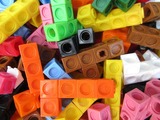
In this lesson students explore polygons and sort them by attributes.
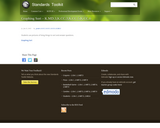
In this assessment task students will cut and classify pictures. They will be asked to explain how the pictures are sorted, count the number in each group, identify the group that is greater and write the correct number from 1-20. Assessment sheets and a rubric are provided.
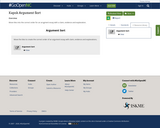
Move tiles into the correct order for an arugment essay with a claim, evidence and explanation.
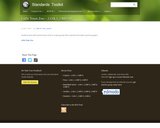
In this assessment task students will use data to create a picture graph and a bar graph. They will sort pictures into four categories. They also answer questions to compare the animals they graphed using addition and subtraction problems. An assessment task sheet and rubric are provided.
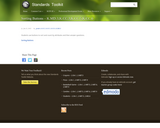
In this assessment task students are asked to sort buttons by the number of holes. They will label how they sorted the groups and then draw a circle around the group with the largest number of buttons. An assessment sheet and rubric are provided.
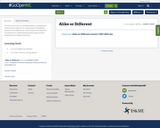
This resource is part of Tools4NCTeachers.
This lesson focuses on classifying objects. Kindergarten students gain experiences comparing and identifying likenesses and differences. These experiences build the foundations for understanding relationships and the development of logical reasoning.
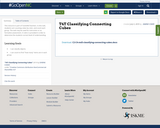
This resource is part of Tools4NCTeachers.
In this task, students sort counting cubes by color, and count each group. The task may be used for instruction or as formative assessment. A rubric is provided in order to determine the students current level of understanding.
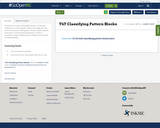
This resource is part of Tools4NCTeachers.
In this task, students sort a set of pattern blocks into categories, and count the amount in each group. The task may be used for instruction or as formative assessment. A rubric is provided in order to determine the students current level of understanding.
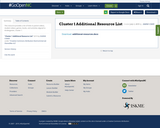
This resource is part of Tools4NCTeachers.
This list contains links to parent videos, student videos, games, books, and activities aligned to Kindergarten, Cluster 1.
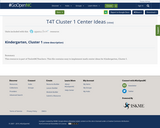
This resource is part of Tools4NCTeachers.
This file contains easy to implement math center ideas for Kindergarten, Cluster 1.
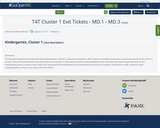
This packet contains exit tickets for the Kindergarten, Cluster 1, geometry standards.
Exit tickets are written responses to questions posed at the end of a lesson. They are brief assessments which allow the teacher to determine student understanding of the concepts and skills taught that day.
At the Kindergarten level, a blank copy of the exit ticket should be displayed on the board and read aloud to students. As teacher reads, students work independently on their own copy of the exit ticket.

This resource is part of Tools4NCTeachers.
This file contains directions and materials for Cluster 1 math games.
Math games are fun, motivating, and provide opportunities for students to build number concepts, reasoning, and fluency. These games may be used as math stations or as whole group learning opportunities.
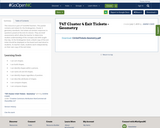
This resource is part of Tools4NCTeachers.
This packet contains exit tickets for the Kindergarten, Cluster 4 geometry standards. Exit tickets are written responses to questions posed at the end of a lesson. They are brief assessments which allow the teacher to determine student understanding of the concepts and skills taught that day. At the Kindergarten level, a blank copy of the exit ticket should be displayed on the board and read aloud to students. As teacher reads, students work independently on their own copy of the exit ticket.
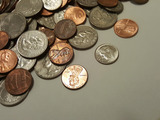
This resource is from Tools4NCTeachers.In this lesson, students observe and describe the characteristics of a quarter, dime, nickel, and penny to help them identify and sort the coins. Students will also represent the number of each coin on a bar graph and will ask and answer questions to interpret the data. Student materials and photos of student work are included.Remix this lesson to include extension ideas or additional pictures of student work.
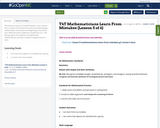
This resource is part of Tools4NCTeachers.
This is lesson five in a series of six lessons focused around developing a mathematical community at the beginning of the school year. While this lesson addresses standard NC.2.G.1, the primary goal is for students to recognize that mathematicians use their mistakes as opportunities to learn.
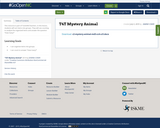
This resource is part of Tools4NCTeachers.
In this lesson, students will sort items into groups. They will use
counting to analyze the organized items and answer the question "How many?"
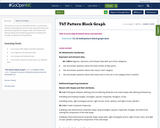
This resource is part of Tools4NCTeachers.
In this lesson, students build pattern block animals inspired by literature, describe and graph the shapes used, and interpret the data by asking and answering questions to develop the concepts of geometry and graphing.
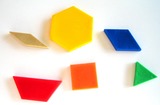
This lesson is from Tools4NCTeachers.In this lesson, students build pattern block animals inspired by literature, describe and graph the shapes used, and interpret the data by asking and answering questions to develop the concepts of geometry and graphing. Remix this lesson to include extension ideas or samples of student work.
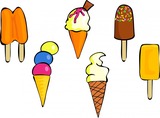
This resource is from Tools4NCTeachers.In this lesson, students represent and interpret three categories of data in charts and tables. They analyze the data to answer compare questions about how many more are in one category than another. The lesson may be modified to integrate or emphasize questions about how many fewer. Samples of student work and student recording sheets are included.Remix this lesson to include extension activites or related math stations. Sharing is caring!